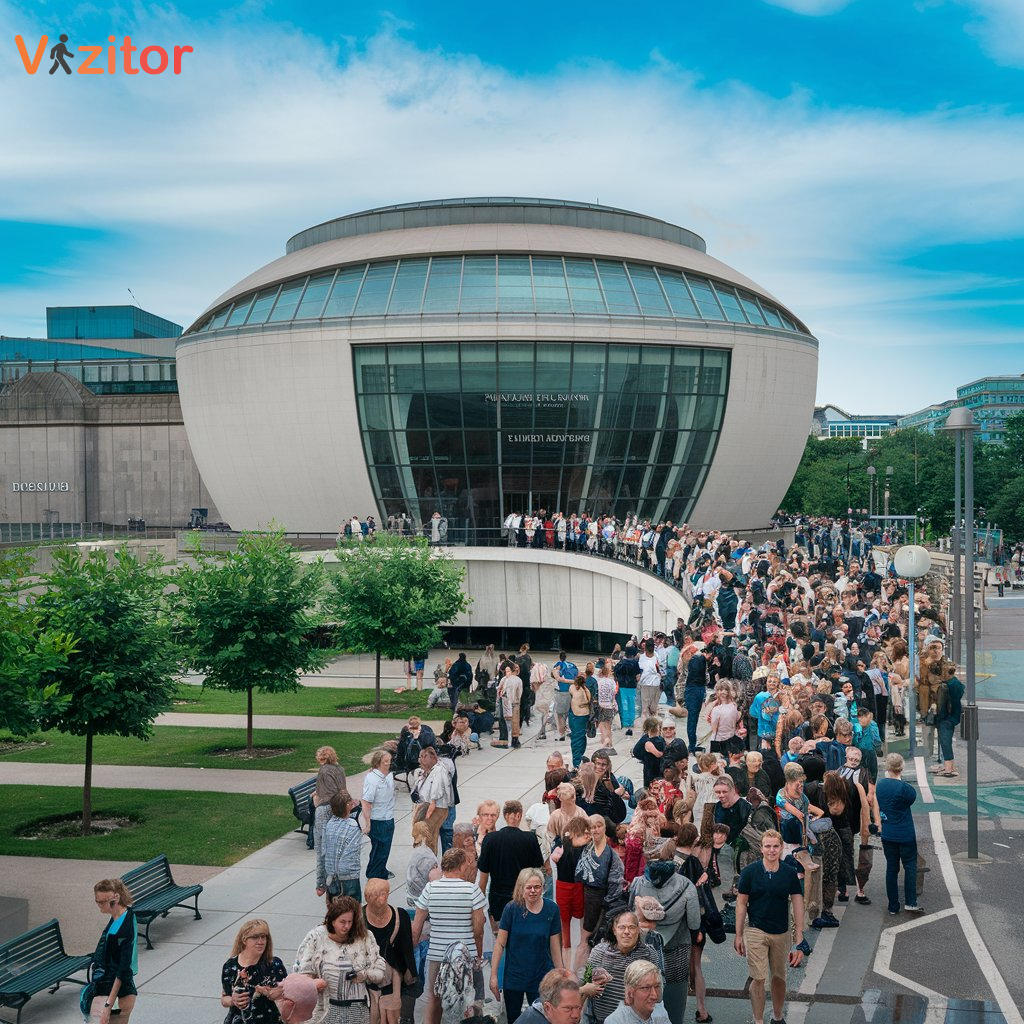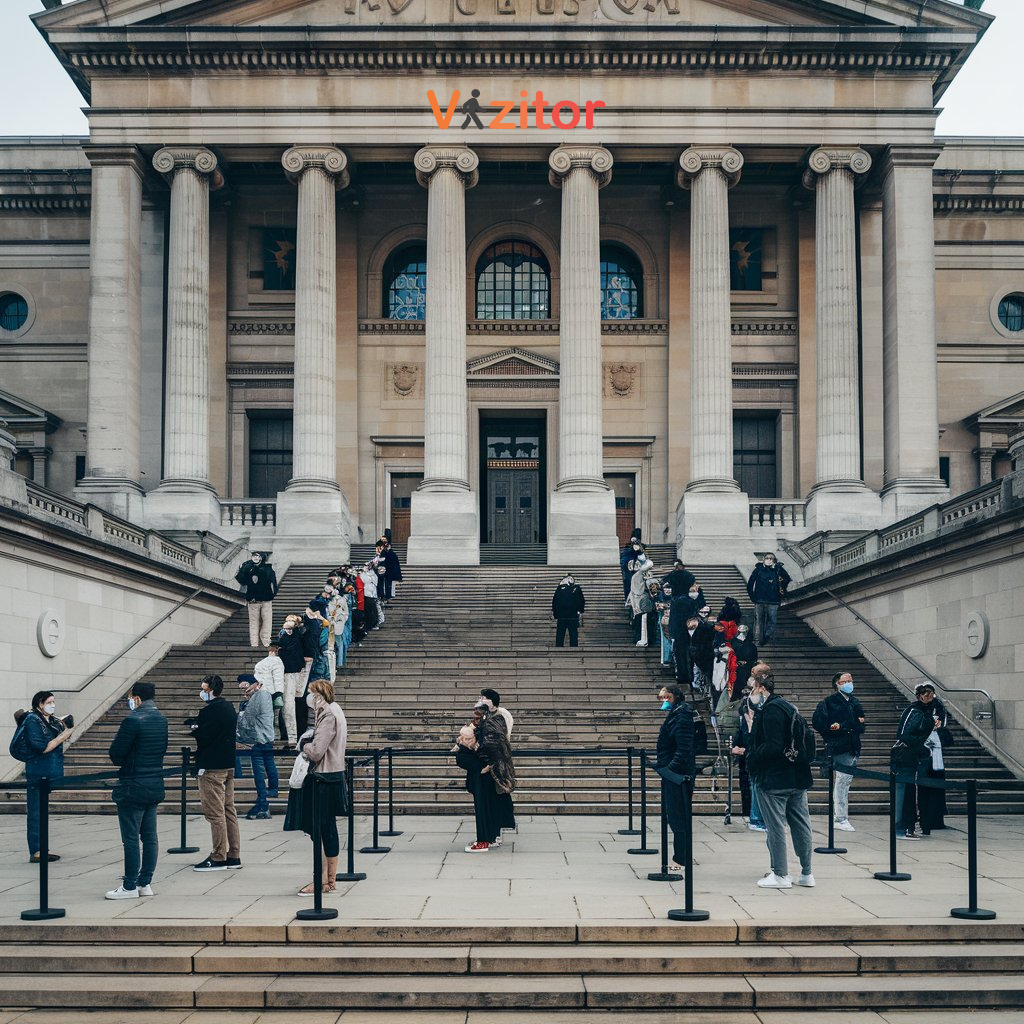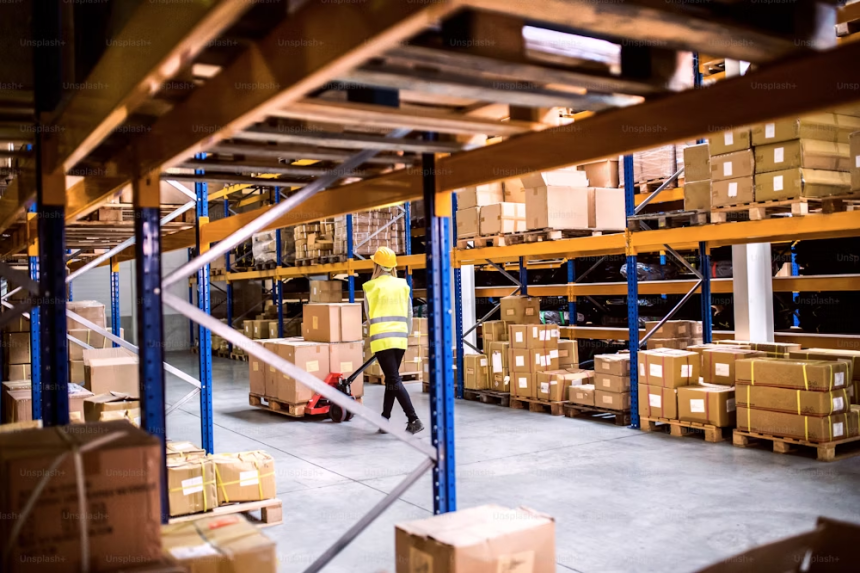Table of Content
Try Vizitor for Free!

Sat, Jan 4, 2025
Read in 9 minutes
Museums are incredible places of learning, exploration, and culture. However, ensuring a seamless, engaging, and memorable experience for visitors can be challenging.
Have you ever walked into a museum and felt completely overwhelmed by the exhibits or lost in a maze of hallways?
Or, perhaps, you’ve wanted to explore more but weren’t sure where to start? You’re not alone. Many visitors find themselves in similar situations, and that’s where museum experience optimization comes into play.
When it comes to museums, the visitor experience is paramount. However, a museum’s experience is not just about the exhibits, artifacts, or artworks; it’s about how smoothly visitors are guided through the space, how long they have to wait to enter, and how well their overall journey is managed from entry to exit.
Effective queue management and visitor management play a crucial role in ensuring that visitors have a positive, enjoyable, and stress-free experience.
This blog post delves into different ways to enhance the museum experience, from the importance of improving the visit to actionable strategies, tips, and the challenges museums may face.
The Importance of a Museum Visiting Experience
Museums play a crucial role in educating the public and preserving history. A well-curated, engaging experience ensures that visitors leave with valuable knowledge and a desire to return.
Cultural and Educational Value: Museums are vital for fostering an understanding of history, culture, and art.
Visitor Satisfaction: A positive experience boosts satisfaction, creating lifelong museum-goers who appreciate the value of art and culture.
Community Engagement: Museums are community hubs where people of all ages and backgrounds can come together, making the experience socially enriching.
Why Should Museums Enhance the Visitor Experience?
Enhancing the visitor experience is not just about comfort; it directly impacts the museum’s success and sustainability.
Attracting More Visitors: A well-rounded experience encourages more visitors, increasing foot traffic and boosting museum revenues.
Building a Positive Reputation: A positive experience leads to word-of-mouth promotion and improved online reviews, enhancing the museum’s reputation.
Fostering Repeat Visits: Museums that constantly innovate their visitor experience can build a loyal audience that returns for new exhibits, programs, or events.
Challenges Faced during Museum Visits
Visiting a museum can be an enriching and educational experience, but various challenges can hinder a visitor’s overall satisfaction.
Addressing these challenges effectively is essential to improving the museum experience for all visitors. Below are some of the most common obstacles faced during museum visits:
1. Long Wait Times and Overcrowding
One of the most significant challenges in museums is managing queues and preventing overcrowding. Whether it’s at the entrance or near popular exhibits, long wait times can leave visitors feeling frustrated, affecting the overall experience.
Overcrowded Exhibits: During peak seasons or at highly popular exhibits, visitors can experience congestion, making it difficult to fully appreciate the display or navigate the space.
Ticketing Delays: If ticketing systems are inefficient or slow, visitors may spend more time waiting to enter the museum than enjoying the exhibits themselves.
No Advanced Booking or Online Ticketing: Without an option for pre-booking tickets, visitors are forced to wait in long lines for admission. Online ticketing and advanced reservations can ease this pressure.
Peak Hours and Seasons: Museums tend to attract large crowds, particularly during weekends, holidays, or special exhibits, leading to long lines at the entrance.
This can cause frustration and a negative start to the visit.
2. Lack of Clear Direction and Wayfinding
Navigating a museum can sometimes be confusing, especially for first-time visitors or those visiting large museums with multiple sections.
Without a clear wayfinding system, visitors may feel disoriented, causing frustration and delays.
Confusing Layouts: Museums with complex or non-linear layouts can make it hard for visitors to find the exhibits they’re interested in.
Inadequate Signage: Poorly placed or unclear signage can leave visitors unsure of where to go next, leading to wasted time and a disjointed experience.
No Virtual Queue Options: Many museums still rely on physical queues, which can be avoided by offering virtual queue options or online booking systems that allow visitors to plan their visit in advance.
3. Poor Visitor Engagement
Visitors come to museums for both learning and entertainment. A lack of interactive and engaging experiences can make the visit feel less rewarding and memorable.
Uninspiring Exhibits: Exhibits that rely solely on static displays or text-based information can fail to capture visitors’ attention, leading to disengagement.
Limited Interactive Technology: Visitors today are accustomed to technology-enhanced experiences, such as virtual reality, interactive displays, or touchscreens. Museums without such features might not fully engage tech-savvy visitors.
4. Inadequate Information or Assistance
Sometimes, visitors find themselves in need of additional information or assistance but struggle to find staff or resources to guide them.
Lack of Staff Availability: In large museums or during busy hours, there might not be enough staff available to answer visitor questions or provide directions.
Insufficient Signage for Services: Visitors may have trouble finding essential services like restrooms, cafes, or gift shops, which can lead to confusion or frustration.
No Wait-Time Information: Without real-time updates or notifications about waiting times, visitors may feel uncertain about how long they will have to wait to enter the museum or specific exhibits.
This can lead to frustration, especially if visitors are unable to plan their time effectively.
5. Inability to Separate Visitor Types
General Visitors and Groups in the Same Queue: Visitors may end up waiting in the same queues as large groups (e.g., school trips, guided tours), leading to frustration for both parties. Museums may fail to segment queues for different types of visitors, causing long waits for everyone.
6. Limited Self-Check-In Options:
Museums with traditional, manual check-in systems often create long queues at entrance points. Introducing self-service kiosks or mobile check-ins can significantly reduce the wait time and streamline the process.

Key Strategies for Enhancing Museum Visits
Implementing digital solutions such as queue Management Systems and visitor management systems in a museum helps streamline the visitor experience by reducing long waiting times and ensuring smooth flow at entrances and exhibitions.
1. Implement Virtual Queuing for a Hassle-Free Visit
One of the most effective strategies to reduce the burden of long queues is virtual queuing. Instead of waiting in long lines for their tickets or entry, visitors can join a virtual queue through their mobile devices or a self-service kiosk.
Visitor Flexibility: Virtual queues allow visitors to enjoy other areas of the museum, grab a snack, or even explore nearby attractions while waiting for their scheduled entry time.
Reduces Overcrowding: This strategy helps distribute visitors evenly throughout the museum and avoids crowd congestion at any one exhibit.
Visitor Satisfaction: With the elimination of physical waiting, visitors are less stressed and enjoy a more comfortable and relaxed experience.
Real- life example:
Many top museums globally, including The Louvre, have successfully incorporated virtual queuing for popular exhibits.
By allowing visitors to pre-book their entry slot, the museum ensures that peak times are more evenly distributed and manageable.
2. Smart Ticketing and Self-Service Kiosks
Integrating smart ticketing solutions is a game-changer in reducing the hassle of purchasing tickets and standing in long queues.
Fast and Contactless: Visitors can book tickets online and use digital passes on their smartphones to enter the museum. This eliminates the need for long lines at ticket counters.
Self-Check-In Kiosks: Visitors can self-check-in through kiosks, speeding up the entry process and reducing manual tasks for the staff.
Real- life example:
The British Museum has adopted digital ticketing and self-check-in kiosks, allowing visitors to bypass long lines and enter quickly.
3. Enhanced Communication and Real-Time Updates
Queue Notifications: Use SMS or app-based notifications to alert visitors when it’s their turn to enter a popular exhibit, reducing the need to stand in line for long periods.
Crowd Control Alerts: If certain sections are becoming overcrowded, notify visitors about less crowded alternatives or temporarily close access to manage flow more effectively.
4. Creating Themed and Immersive Spaces
Designing spaces that evoke a strong sense of atmosphere can transform a simple visit into a truly immersive experience.
Thematic Design: Use lighting, sound, and decor to create environments that transport visitors into the world of the exhibits.
Interactive Storytelling: Guide visitors through exhibits with a narrative that makes them feel like they are part of a larger story.
Multi-Sensory Experiences: Engage multiple senses (sight, sound, touch) to enhance the emotional connection to exhibits.
5. Streamlining Visits with QR Codes
Using QR codes is an innovative and efficient method to streamline the museum experience, enhance visitor convenience, and reduce waiting times.
Contactless Entry: QR codes can be used for contactless entry, where visitors simply scan the code at entry points or ticket gates. This eliminates the need for physical tickets, reducing lines at the ticket counter and enhancing safety.
Instant Access to Information: Museums can place QR codes on exhibits, which visitors can scan with their smartphones.
This provides instant access to additional information, multimedia content, and even virtual tours, allowing visitors to explore exhibits at their own pace without waiting for guided tours.
Real- life Example: The National Gallery of Art in Washington D.C. uses QR codes for both exhibit navigation and entry, allowing visitors to access information without waiting and ensuring a seamless, self-guided experience.
6. Biometric Systems
Implement facial recognition or fingerprint scanning for faster, contactless check-in in museums.
These biometric kiosks increase accuracy and reduce the possibility of fraudulent entries, ensuring only valid visitors are allowed access.
7. Real-time Attendance Tracking
Use digital systems to track the number of visitors in the museum at any given time, allowing for real-time adjustments.
This enables museum staff to monitor crowd density and take necessary actions, such as opening additional entry points or directing visitors to less crowded areas.
8. Reducing Wait Times with Interactive Entertainment
While waiting in line can be inevitable during peak hours, museums can use this time productively by offering interactive content or educational material to entertain visitors.
Digital kiosks or displays can offer fun facts about upcoming exhibits or quick quizzes, turning the wait time into an engaging learning experience.
Vizitor’s Queue Management System ensures a seamless and efficient visitor experience in museums by offering digital ticketing, virtual queues, and real-time crowd management for smoother entry and reduced waiting times.
9. Visitor Feedback Systems to Improve Museum Services
Collecting visitor feedback through digital surveys or apps helps museums improve services. It highlights areas for improvement like crowd management and exhibit accessibility, ensuring a better experience for future visitors.
Amazing Stats:
- As of 2023, two-thirds of U.S. museums have not yet returned to pre-pandemic attendance levels, averaging 71% of their pre-pandemic attendance.
- A study found that, on average, each participating art museum annually delivered more than $325 million in well-being–related economic value to its visitors.
- In 2023, the Smithsonian Institution’s museums and research centers in the U.S. capital, Washington, D.C., recorded approximately 18 million visits.
How Vizitor Can Enhance Your Museum Visits
- Efficient visitor registration for smooth check-ins.
- Real-time reporting to monitor visitor flow.
- Data collection to personalize the visitor experience.
- Easy access control to enhance security and management.
- Visitor tracking for better insights and service adjustments.
Enhancing Museum Experiences: The Path Forward
Enhancing the visitor experience in museums requires a blend of smart technology, thoughtful design, and continuous feedback.
By incorporating efficient management systems, personalized services, and engaging visitor interactions, museums can ensure each visit is not just educational but also memorable.
Ready to optimize your museum’s visitor experience?
Contact us today and learn how Vizitor can streamline your visitor management for a seamless and engaging experience!









